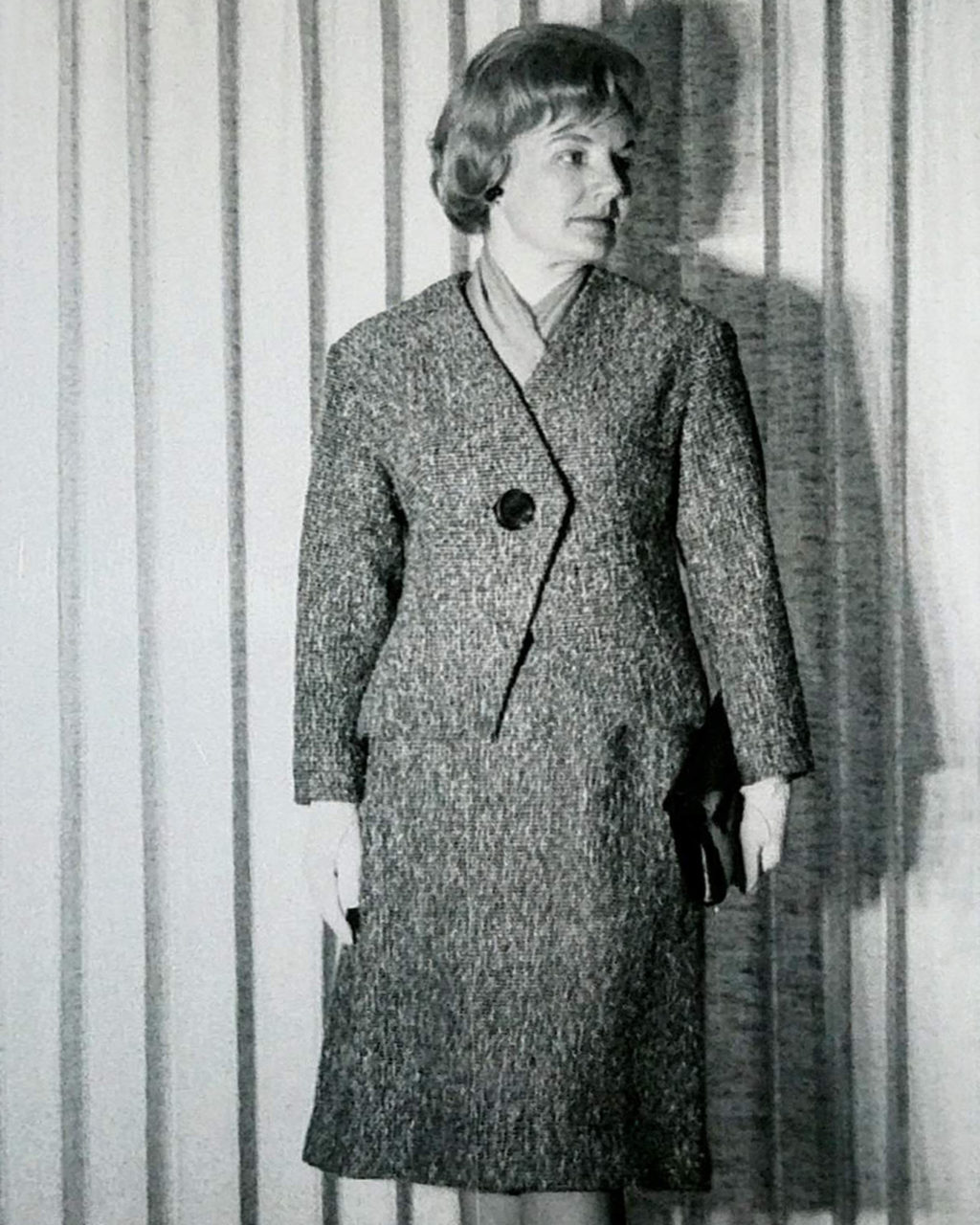Style Lessons from My Grandmother
July 20, 2018
Amy Boone is a member of the MM engineering team, and a budding fashion writer in her own right—when she’s not debugging our website, she writes a blog about style called This Tailored Life. We recently asked her to share the story of her grandmother, Nancy, an impeccably dressed woman who’s seen her share of trends over the years, and who has been a source of fashion wisdom for Amy since childhood. Below, Amy shares a few of Nancy’s fashion basics—alongside some incredibly chic photos.
My maternal grandmother, Nancy, is one of the most stylish people I know. Her aesthetic is impeccable and understated, to the point where I almost never remember a specific item she’s worn, except for the occasional dramatic accessory. Nancy encouraged my own interest in fashion from a young age, buying me books for my birthday and sending me articles about celebrities’ interesting wardrobe choices. On her ninetieth birthday, I decided to interview her: As a fashionable woman now for nearly a century, I was curious to hear what she’s learned over the years about personal style. Here are the three most important lessons she gave me.
Tip #1: Take the time to understand your shape and coloring.

A lot of Nancy’s advice comes from a fashion styling class she took in Beverly Hills in the late 1950s. The class required everyone to take full-body photographs of themselves, so that they could get an objective look at their shape. Nancy still has the portfolio she created in class of flattering shapes and styles for her body type. She remembers her classmates comparing notes: One woman revealed that her legs were actually two significantly different lengths, but you would never know from the way she had learned to dress herself.
In the 1950s, apparel costs were around 12% of a family’s budget (compared to 3-4% today), and that’s not because they purchased more clothing. Quality pieces were expensive, and being able to strategically mix and match complementary shapes and colors could greatly expand one’s wardrobe options. While Nancy’s focus on finding garments that fit her perfectly was somewhat economically motivated, her advice still holds true today, even for inexpensive pieces. Building a wardrobe of silhouettes and colors that you know make you look your best prevents the feeling of having “nothing to wear” while staring into a full closet.
Tip #2: Be your own fashion icon.

When I asked Nancy about her personal style icons, she mentioned a few of the givens like Jackie Onassis and Audrey Hepburn. But she also cautioned against becoming too attached to the idea of a “style icon.” In her opinion, getting dressed should only be about you, and what looks good on someone else might not work for you at all. She’s an advocate for adding an element of drama to an outfit to make it as suited to your personality as it is to your body type. That “drama” could be as subtle as a top that contrasts with your skin tone, or as loud as a dress with feather trim. Nancy credits that sense of independence for making her one of the best-dressed women at work. While others gave into unflattering trends, she stuck to the classics, and always remained in tune with her personal style.
Back then, her coworkers only had mainstream celebrity and fashion publications to look to for guidance. Without a considerable amount of research, it was almost impossible to think of dressing a different way than what was prescribed by fashion magazines. Today, we can fill Pinterest boards and follow Instagram accounts that resonate with us—and instead of mimicking a few famous style icons, we can take inspiration from many different places and use it to develop our own personal style.
Tip #3: Learn how to sew, at least a little bit.

Nancy grew up on a farm in Ohio before moving to California in her twenties. She had a love for great clothing from a very young age and learned how to sew in order to create the pieces she wanted. She made a lot of her own dresses for school, even using old chicken feed sacks as fabric. For her, the act of sewing was not virtuous or even very fun. She only sewed as a means to dress exactly how she wanted to (after all, you aren’t limited to what’s in stock at the local shop if you can make the pieces you want). My mom learned to sew in a high school home economics class, and Nancy helped her with her projects. My mom taught me the basics, and I enjoyed it so much that I enrolled in further sewing classes.
Today, it’s not exactly economical to sew your own clothing when you compare the cost of fabric and time to the price of most fashion brands. But even if you don’t care to learn how to make a dress from scratch, basic sewing skills can be invaluable, whether you need to hem a dress you just bought, or fix a button that popped off your shirt while traveling. Those skills also allow for further personalization, like swapping out the buttons on a garment, or buying a fabulous length of silk that you can cut and hem to make a square scarf.
I’m still finding my footing with my personal style, but Nancy’s advice has given me important direction, even as more outdated “rules” fall by the wayside (you won’t ever be able to stop me from wearing navy blue and black together). Even though fashion has evolved a great deal since the 1950s, these foundational lessons have helped me develop my own style and wardrobe—and kept both me and Nancy looking timeless.
Inspired by Nancy to find a power piece of your own? Shop our bestsellers here.





